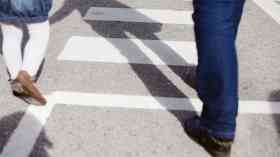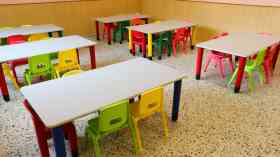
Funding for primary PE and sport provision
The funding that primary schools receive for PE and sports provision from the Department for Education has doubled. Education Business looks at the criteria and how it can be spent
The Department for Education (DfE) has doubled the amount of money that primary schools get for PE and sport provision to £320 million as part of a series of programmes aimed at improving healthy lifestyles and tackling obesity among pupils.
Details of the individual allocations at school level have now been published along with funding guidance for this scheme and case studies showing how some schools have delivered a real impact for pupils through sports and physical activity.
Commenting on the funding, minister for children and families, Robert Goodwill, said: “We want to make sure all children have a healthy and active lifestyle and it’s vital that we encourage this in our classrooms. That’s why we have doubled the Primary PE and Sport Premium to £20 million per year to improve the quality of PE and sport in our schools.”
Public health minister, Steve Brine, also commented: “Investing in school facilities such as sports halls, playgrounds, kitchens and dining facilities will undoubtedly make a significant difference to children’s health across the country.
“The school environment is critical in shaping a healthy lifestyle, which is why we are using the money from the soft drinks industry levy to double the PE and sport premium.”
WHO RECEIVES THE FUNDING?
For the academic year 2017 to 2018, most schools with primary-age pupils receive the premium. These include: schools maintained by the local authority; academies and free schools; special schools; non‑maintained special schools; city technical colleges; and pupil referral units.
However, nursery schools, studio schools, universal technical colleges, and independent schools, except for non-maintained special schools, do not receive the cash.
The amount of money issued to schools is dependant on how many pupils there are in years one to six. For schools that do not follow year groups, such as a number of special schools, it will be based on pupils aged between five and 10.
The DfE determines how many pupils in a school attract the funding by using data from the January 2017 school census.
In regards to a new school, or a school teaching eligible pupils for the first time in the 2017 to 2018 academic year, funding will be based on data from the autumn 2017 school census.
HOW MUCH IS AVAILABLE?
For schools that have 16 or less eligible pupils, they will receive £1,000 per pupils. Schools with 17 or more pupils will see £16,000, plus an additional payment of £10 per pupil.
The payment schedule has also been released, however, for maintained schools, including pupil referral units, the funding will not be issued directly from the DfE. It will be passed on to the local authority to be issued to the school.
Local authorities receive the PE and sports premium funding for maintained schools in two separate payments. One on 31 October 2017, which has already passed, and on 30 April 2018.
A new maintained school or for those teaching eligible pupils for the first time, funding will be given on 31 January 2018 and 30 April 2018.
For academies, free schools and CTCs, the Education Skills and Funding Agency (ESFA) will send the funding in two separate payments on 1 November, which has already passed, and 1 May 2018. However, new academies, free schools and CTCs will receive funds on 1 February 2018 and 1 May 2018.
The ESFA sends non-maintained special schools their PE and sport premium funding in two separate payments. The first payment will be scheduled for after 1 November 2017 and the second for after 1 May 2018.
USING THE FUNDING
The aim of the money is to make additional and sustainable improvements to the quality of PE and sport offered by schools. According to the DfE, it should be used to develop or add to the PE and sport activities that a school already provide and to build capacity and capability within the school to ensure that improvements will benefit pupils joining the school in the future.
Schools are expected to see improvements across five areas.
For example, the chief medical officer guidelines recommend that all children and young people aged five to 18 engage in at least an hour of physical activity a day, half of that should be in school. The funding is expected to boost regular physical activity.
In addition, schools should see the profile of PE and sport raised across the school “as a tool for whole-school improvement”.
The funding should increase confidence, knowledge and skills of all staff in teaching PE and sport, and provide a broader experience of a range of sports activities offered to all pupils, as well as increase participation in competitive sport.
Examples of putting the funds to good use include providing staff with professional development, mentoring, training and resources to help teach the subject more effectively, and hiring qualified sports coaches to work with teachers to enhance or extend opportunities.
Other suggestions include introducing new sports, dance or other activities to encourage more pupils to take up a physical activity and to support and involve the least active children by providing targeted activities, and running or extending school sports and holiday clubs.
The money will also allow schools to run more sports competitions, partner with other schools to run sports activities and clubs and encourage pupils to take on leadership or volunteer roles that support sport and physical activity within a school.
Additional swimming provision could also be provided, targeted at pupils not able to meet the swimming requirements of the national curriculum.
The DfE has also advised that funding should not be used to employ coaches or specialist teachers to cover planning preparation and assessment (PPA) arrangements as it should come out of core staffing budgets.
The money should also not be used to teach the minimum requirements of the national curriculum, including those specified for swimming. In the case of academies and free schools, it should not be used to teach existing PE curriculum.
ASSESSMENT OF FUNDS
How the PE and sport premium is used will be assessed by Ofsted, which will measure its impact on pupil outcomes, and how effectively governors hold school leaders to account for this.
Schools must publish details on how the money is spent online, including the amount received; a full breakdown of how it has been, or will be spent; the impact the school has seen on its pupils’ PE and
sport participation and attainment; and how the improvements will be sustainable in the future.
Recently introduced for the 2017 to 2018 academic year, schools must publish online how many pupils within their six year cohort are meeting the national curriculum requirement to swim competently, confidently and proficiently over a distance of at least 25 metres, using a range of strokes effectively and performing safe self-rescue in different water-based situations.
This condition has been added in response to recommendations from the Swim Group, who reviewed curriculum swimming and water safety in primary schools.
Accountability reviews will be carried out after the April deadline, so schools have published details on their websites of how they have spent their premium funding.
The DfE will sample a number of schools in each local authority, with the schools chosen based on a mix of random selection and prior non-compliance with the online reporting requirements. L
Further Information:Latest News
19/12/2025 - 09:54
The Education Committee has expanded its ongoing inquiry into the early years sector to examine how safeguarding can be strengthened in early years settings.
18/12/2025 - 09:25
The UK will be rejoining the Erasmus programme in 2027, following a package of agreements with the EU.
17/12/2025 - 09:31
Ofqual has fined exam board Pearson more than £2 million in total for serious breaches in three separate cases between 2019 and 2023 which collectively affected tens of thousands of students.
16/12/2025 - 09:19
The average funding rates will increase by 4.3% for under 2s, and by almost 5% for 3-and-4-year-olds.
15/12/2025 - 10:30
Local colleges are set to receive £570 million in government funding to expand training facilities in areas such as construction and engineering.







